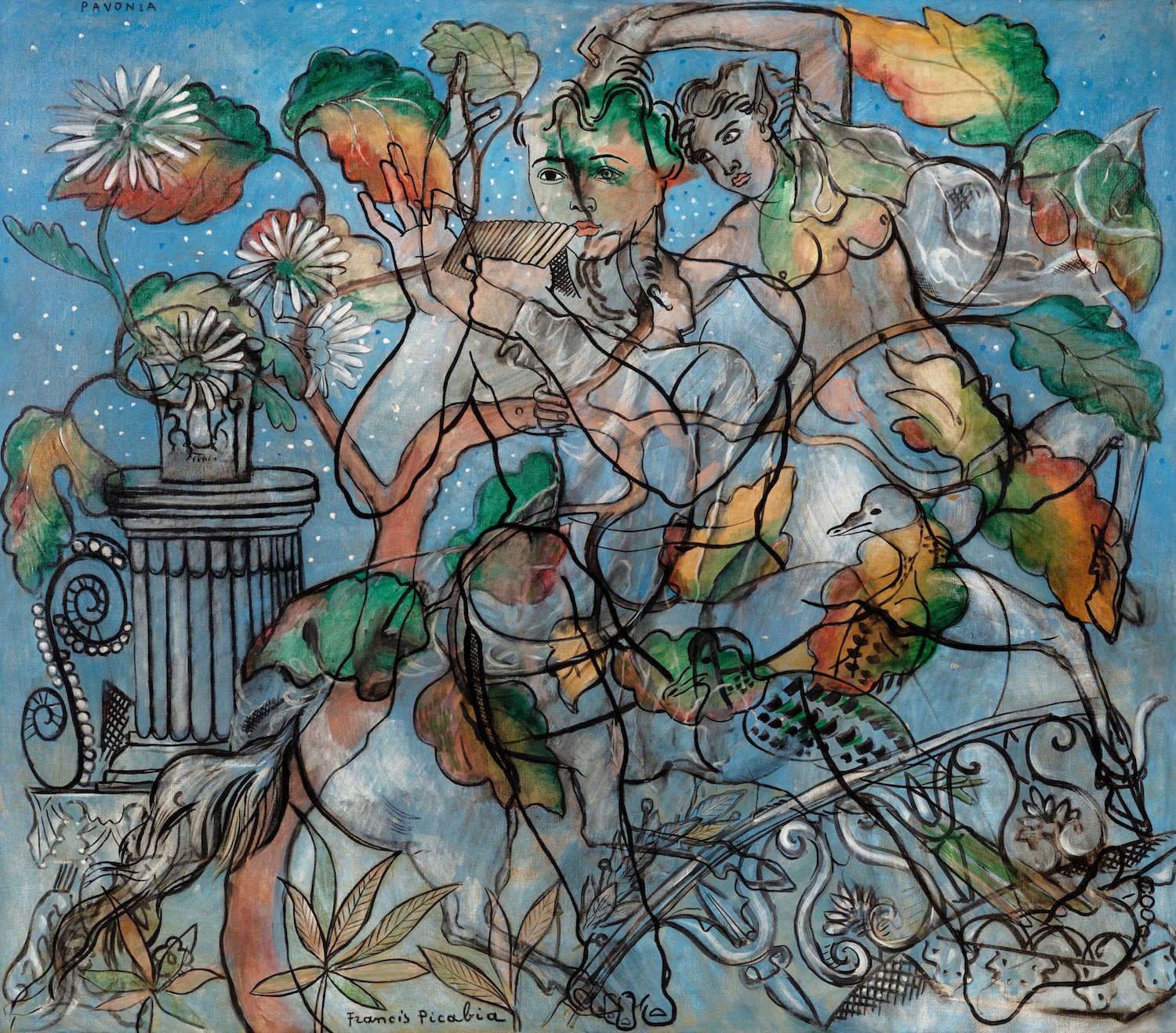
Surrealism is having a moment. From the Tate’s international survey to the stacked lineup of Surrealist artists in the central exhibition of the 59th Venice Biennale, the early 20th-century movement is taking on new significance for artists and curators alike.
On the market side, some recalibration is happening as well. Last week, Sotheby’s held its first-ever Surrealism auction in Paris, led by a record-setting Francis Picabia painting. Pavonia (1929) fetched $10.9 million (€10 million), surpassing the late artist’s previous high of $8.8 million, set in 2013.
The legendary dealer Léonce Rosenberg commissioned Picabia to create Pavonia for his Paris apartment (specifically, Rosenberg’s wife’s bedroom). It was the central panel in a grouping from Picabia’s “Transparences” series, for which the artist deployed overlapping imagery to cinematic effect.
On the heels of this headline-making sale, we dug into the Artnet Price Database to see how the protean artist’s market has evolved over the years—and where it may go from here.
The Context
Auction Record: $10.9 million for Pavonia (1929), at Sotheby’s Paris in March 2022
Picabia’s Performance in 2021
Lots sold: 48
Bought in: 17
Sell-through rate: 65 percent
Average sale price: $332,302
Mean estimate: $236,391
Total sales: $16 million
Top painting price: $2.3 million
Lowest painting price: $19,000
Lowest overall price: $439, for a small stencil print from an edition of 300
© 2022 Artnet Worldwide Corporation.
The Appraisal
- The Power of Transparency. The record-setting painting Pavonia hails from Picabia’s “Transparences” series, which is widely regarded as his most desirable. Of the artist’s top 10 auction prices, six are from this body of work. Picabia created the “Transparences”—defined by layered imagery drawn from mythology, religion, nature, and philosophy—between 1927 and 1933.
- Consistent Supply. The volume of Picabia works that hit the block annually has remained remarkably consistent over the past decade. Since 2011, the number of works offered each year has generally hovered in the 80s, with the number of works sold ranging from 48 to 69.
- A Short-Lived MoMA Bump. In 2016, Picabia’s best year at auction, his work generated $24.9 million. That same year, the Museum of Modern Art in New York opened the late artist’s first ever full-career retrospective. But the MoMA bump did not last. In 2017, Picabia’s total sales fell 25 percent, and the following year, they tumbled another 25 percent, to $14 million.
- Less Interest Than You’d Think. Picabia may have some die-hard fans, but he draws fewer searches in the Artnet Price Database than some of his peers. In 2021, the French painter notched 3,120 searches, fewer than Man Ray (3,688), Max Ernst (4,263), and René Magritte (6,374).
- Room to Grow. Both Picabia’s Price Database searches and his auction prices suggest that he has a ways to grow to catch up to his Surrealist brethren. Magritte’s auction record, also set this year, eclipses Picabia’s at $79.4 million; Joan Miró’s sits at $37 million; Max Ernst’s is $16.3 million. (It should be noted that Picabia’s top price still eclipses that of female peers like Leonora Carrington and Dorothea Tanning.)
The Bottom Line
Over the course of his decorated career, Picabia—who was born wealthy and gained a reputation as a jokester and a playboy—hopped from Impressionism to Cubism to Dadaism, even dabbling at one point in Renaissance-style painting. His heterogenous approach earned him admirers in his own time and beyond, but has hampered his appeal in the art market, which prefers clear brands and easy definitions.
Some sources say Picabia’s protean style also makes it more difficult to identify fakes, while his penchant for reusing old canvases and incorporating earlier material into newer work has made accurately dating objects a particularly daunting task. The Picabia catalogue raisonné is not yet complete, though new volumes were published in 2016 and 2017.
Picabia is a quintessential artist’s artist: Many of his best works are already in museum collections, and his paintings have been collected by the likes of painter Julian Schnabel and Calder Foundation chief Sandy Rower. In recent years, his work has occasionally popped up at art fairs and sold for prices in the high six and (very) low seven figures.
Because of his slippery style, Picabia is unlikely to achieve the same level of market success as Magritte or Miró. But for those who want to own work by an artist who has influenced generations, and whose stature in art history is likely only to grow, Picabia remains a canny choice.